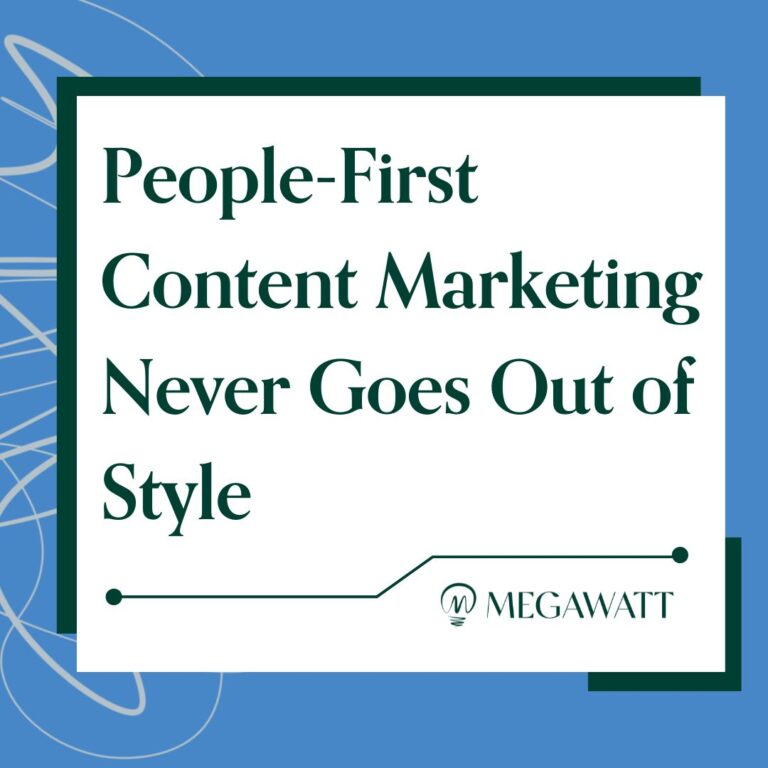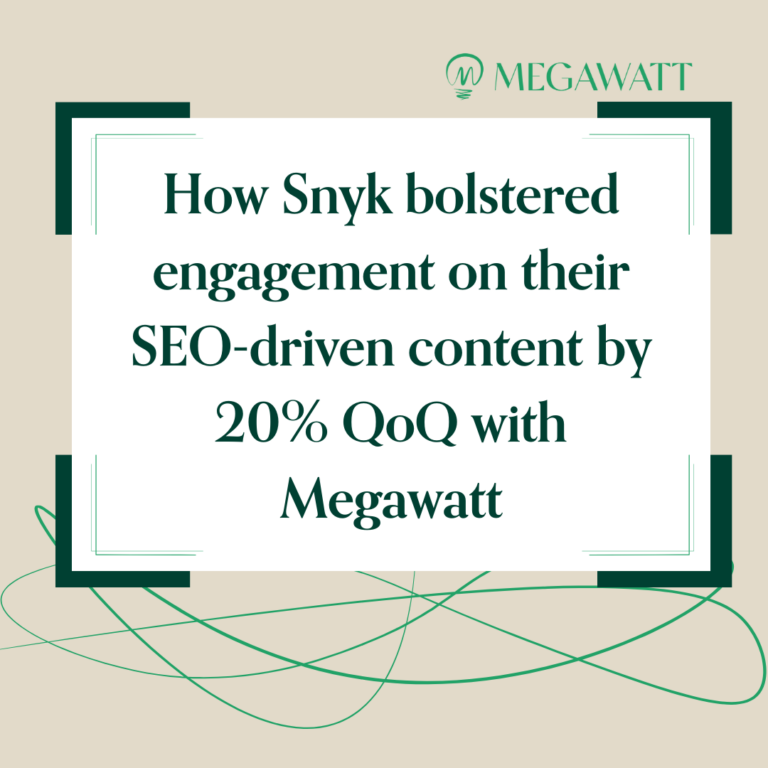Cybersecurity Content Marketing Examples to Help Marketers Plan
Cybersecurity content marketing examples can be difficult to find, so our goal with this post is to share some best practices with real-world examples of each (plus a few don’ts along the way).
Even with other sectors of the tech industry struggling or in flux, much of the cybersecurity market is still flourishing. Why? Well for one, almost every U.S. state released cybersecurity, privacy, or compliance-related legislation last year, ratcheting up demand for solutions to help organizations comply.
For another, many security practitioners are experiencing lots of pressure from higher-ups. As of mid-2022, leadership (such as the board or CEO) specifically instructed 85% of CIOs to improve the security of their software build and distribution environments — a daunting challenge during a cybersecurity talent shortage. Because of this pressure, security teams are searching for smart tools to help them do their jobs more efficiently.
All of this puts cybersecurity vendors in an ideal position to grow their market share and revenue. And developing a marketing and sales strategy centered around valuable, findable content is the best way to capitalize on this opportunity.
Why use content marketing in cybersecurity?
Putting out valuable content (strategically!) impacts a brand’s growth significantly. This is no different for content marketing in cybersecurity. Examples of benefits include:
- Improved trustworthiness. Content is a great place to show off your industry expertise. Security experts especially appreciate when cybersecurity vendors generously offer insightful blogs, whitepapers, etc. They also love to hear from other practitioners and leaders in their industry, making thought leadership-driven content a fantastic way to gain and cement trust.
- Positive brand experience. Good content informs and educates your target audience. It aims to answer their pressing challenges or questions related to your brand’s field of expertise. So when this audience is ready to buy, your brand name will be top of mind. The busier and more harried cybersecurity professionals are, the more they will look to content to answer their questions and help them do their jobs effectively.
- Findability on search engines. If you consistently produce search engine optimized content, your brand will become much easier to find on Google. This means more leads, more conversions, and more revenue.
Sign up for Dear Wattson, our weekly newsletter, where all content conundrums are answered!
Cybersecurity content marketing examples from the real world (plus best practices)
As you start considering content marketing, following general best practices is always a great idea. But, you’ll also face unique challenges in this industry.
We’re writing for a sometimes (understandably) cynical and always research-oriented audience (security pros). Plus we must remember they have limited time to consume content.
To get you thinking about how to write for this unique audience, here are a few do’s and don’ts to consider, along with some real-world cybersecurity content marketing examples:
DON’T use negativity as a selling point.
While many cybersecurity companies have long avoided “fear, uncertainty, and doubt” (FUD) marketing, some still fall into this trap.
When strategizing your cybersecurity content marketing plans, avoid bottom lines or CTAs focusing on the “worst-case scenario.” Instead, focus on the real challenges security pros face and how to solve them.
In addition, think strategically about whether or not to reference high-profile data breaches. While doing so provides proof points for the value of your solution, it can potentially alienate the companies affected by these attacks.
Also, if you use an account-based marketing or selling strategy, make sure that the content marketing team knows if any named accounts were affected by specific breaches. This way, they can avoid calling out these situations in content.
DO focus on solving real-world pain points.
Again, instead of using FUD, tie your content back to the everyday hurdles your audience actually faces.
Fear is not a daily pain point for most security pros, who often start in the industry because they love the thrill of the chase and the daily satisfaction of protecting organizations.
Real security teams lose sleep over issues like…
- Failing compliance audits
- Feeling overwhelmed by governance requirements
- Supporting other departments who may not understand security best practices
- Working with a short-staffed team (hello again, security talent shortage)
Secberus’s team focuses on these issues in their cybersecurity content marketing— an example is their slogan: “Stop complicating cloud security.”
This slogan emphasizes the everyday pain points of implementing successful cloud security — a generally complex and time-intensive process — rather than focusing on industry-wide cloud risks.
Their slogan also implies they can help teams simplify security processes and take rote tasks off their plates. Now that is appealing.
To show that you understand your audience’s everyday challenges, lean on your technical and security experts as often as possible.
Again, remember that CISOs trust other CISOs and cybersecurity experts. The more your content comes from trusted peers, the more likely it will resonate.
DON’T assume you can get named case studies or customer quotes.
Getting publicly-named case studies or quotes is often tricky in the cybersecurity industry. Your customers may closely guard any information about their security efforts, including which vendors they work with (a.k.a. YOU).
While asking for a public testimonial/case study never hurts, don’t put too much weight on it until the customer has given you a solid yes.
DO find creative, customer-approved ways to mention real success stories.
Even if a customer says “no” to giving a public quote or case study, there are still creative ways to use their voice in your content marketing material. Here are a few places to start…
- Publish case studies or quotes anonymously. They’re still invaluable stories to tell!
- Conduct a customer survey and present the results as statistics or general research findings.
- Position one of your customer’s thought leaders as an industry SME rather than a direct user of your product or service.
- Encourage them to bring up ideas and best practices that align with your organization’s values (which shouldn’t be hard to do if they’re a satisfied customer!)
Laminar Security has a few great examples of anonymous case studies. These case studies tell great success stories, even though their customers preferred not to be named. In addition, if you can secure a case study (anonymous or named), there are several strategic ways to maximize that case study’s value.
***
You might also like:
Want more info on how to do this well? Carey Thiels wrote a fantastic piece about awareness marketing for B2B tech companies. You can read her post on our blog.
***
DON’T just sell to the security team.
Any security initiative includes multiple stakeholders: developers, data scientists, C-suite members, IT, etc. So, there’s a good chance that non-security roles will research your product or be part of the sales cycle in some way. Don’t leave these other important decision-makers out of your cybersecurity content marketing plans!
DO emphasize value-adds for other business units.
Because these other stakeholders’ perspectives matter, your marketing messages must also align with their needs. For instance, if you’re an application security vendor, add a DevOps angle to your content. Check out Snyk’s cybersecurity content marketing: an example of how to strategically market to both security and development teams. Their team’s content heavily emphasizes the value of a DevSecOps approach in which these teams work as closely together as possible.
Also, remember that the rest of the business often views security as a “cost center.” You’ll need to find ways to flip this assumption on its head. Emphasize that security and compliance are often necessary to:
- make sales (the sales team will care about this)
- keep customers (customer success will see the value here)
- prevent costly business risks (the C-Suite, including the CEO and CFO, will get this one)
All of the above is true — security is far from “just” a cost center, But other departments won’t see it this way unless you tell that story clearly and regularly.
DON’T rush the marketing/sales cycle.
Unlike other industries, macro-conversions in cybersecurity (e.g., getting on a sales call, purchasing a product, or signing a contract) can take months or even years! This is because budgeting, procurement, and legal requirements often take a long time.
So when creating content, don’t push a security audience to take “big” steps, such as requesting a demo or getting on a sales call before they are ready. Instead…
DO embrace full-lifecycle marketing.
Create content that fits into every stage of the buyer’s journey: awareness, consideration, and decision-making. This way, you can create appropriate CTAs for each stage rather than pushing “big steps” across the board.
Then, track how your audiences interact with content at these various stages, keeping a close eye on micro-conversions such as downloading a resource or watching a webinar. Find strategic ways to provide content for the next phase of the buyer’s journey after they have indicated interest through these micro-conversions.
Full lifecycle marketing also means producing informative resources that your audiences will find helpful, even if they aren’t ready to purchase yet (or don’t realize they have a need). Valuable content builds trust and credibility, leading your target audience down the marketing funnel without being too pushy (this is what content marketing is at its core).
As a great cybersecurity content marketing example, take Rapid7’s security fundamentals glossary, which focuses on educating rather than selling. It enables Rapid7’s audience to look up relevant terms quickly, even if they aren’t in a “buying mood.” Remember how busy security professionals and others involved in the buying cycle can be and aim to produce relevant educational content for them. (Plus, a glossary like this is an excellent SEO function!)
BONUS: DO invest in your brand.
When thinking about your content marketing, it’s easy to get caught up in collecting concrete metrics like downloads and “leads.” But even though some brand-related metrics, such as impressions, are more challenging to measure, they are still equally important.
After all, if no one has heard of you, they won’t come knocking when they are ready to purchase.
Brand-focused marketing isn’t just limited to B2C companies! B2B cybersecurity companies have also pulled off some fantastic brand-oriented marketing campaigns (take Promon’s “Rapper or Malware?” quiz as an example).
More resources for your cybersecurity content marketing journey
Megawatt’s team of cybersecurity content experts has created several resources to help you create compelling content that drives business results. In addition, we help cybersecurity companies create informative, high-quality content for their technical security audiences — optimized for both humans and search engines.
Need help curating content security buyers will love?
Contact us today.





